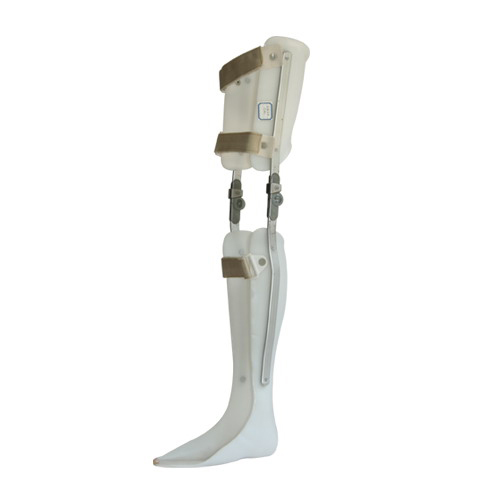KAFO Knee Ankle Foot Orthotics – Basic Functions

Refers to the general term for external devices assembled on the limbs, trunk and other parts of the human body, and its purpose is to prevent or correct the deformity of the limbs and trunk, or to treat bone, joint and neuromuscular diseases and to compensate for their functions.
basic skills
It mainly includes the following aspects:
(1) Stability and support: To maintain joint stability and restore weight-bearing or exercise capacity by limiting abnormal movements of the limb or trunk.
(2) Fixation and correction: For deformed limbs or trunks, the deformity is corrected or the aggravation of the deformity is prevented by fixing the diseased part.
(3) Protection and load-free: By fixing diseased limbs or joints, restricting their abnormal activities, maintaining the normal alignment of limbs and joints, and reducing or eliminating long-bearing joints for lower limb load-bearing joints.
(4) Compensation and assistance: provide power or energy storage through certain devices such as rubber bands, springs, etc., to compensate for the lost muscle function, or to give certain assistance to the weaker muscles to assist limb activities or Movement of the paralyzed limb.
Orthotics (2)—Classification
According to the installation site, it is divided into three categories: upper limb orthosis, lower limb orthosis and spinal orthosis.
Orthotics naming in Chinese and English
upper limb orthosis
Shoulder Elbow Wrist Hand Orthosis (SEWHO)
Elbow Wrist Hand Orthosis (EWHO)
Wrist Hand Orthosis (WHO)
Hand Orthosis Hand Orthosis (HO)
lower extremity orthoses
Hip Knee Ankle Foot Orthosis (HKAFO)
Knee Orthosis Knee Orthosis(KO)
Knee Ankle Foot Orthosis (KAFO)
Ankle Foot Orthosis (AFO)
Foot Orthosis Foot Orthosis (FO)
Spinal Orthosis
Cervical Orthosis Cervical Orthosis (CO)
Thoracolumbosacral orthosis Thorax Lumbus Sacrum Orthosis (TLSO)
Lumbus Sacrum Orthosis (LSO)
1. Upper extremity orthoses are divided into two categories: fixed (static) and functional (movable) according to their functions. The former has no movement device and is used for fixation, support, and braking. The latter have locomotion devices that allow movement of the body or control and assist movement of the body.
Upper extremity orthoses can basically be divided into two categories, namely fixed (static) orthoses and functional (active) orthoses. Fixed orthoses have no movable parts, and are mainly used to fix limbs and functional positions, limit abnormal activities, apply to inflammation of upper limb joints and tendon sheaths, and promote fracture healing. The feature of functional orthoses is to allow a certain degree of movement of the limbs, or to achieve therapeutic purposes through the movement of the brace. Sometimes, an upper extremity orthosis can have both fixed and functional roles.
Post time: Jul-30-2022
